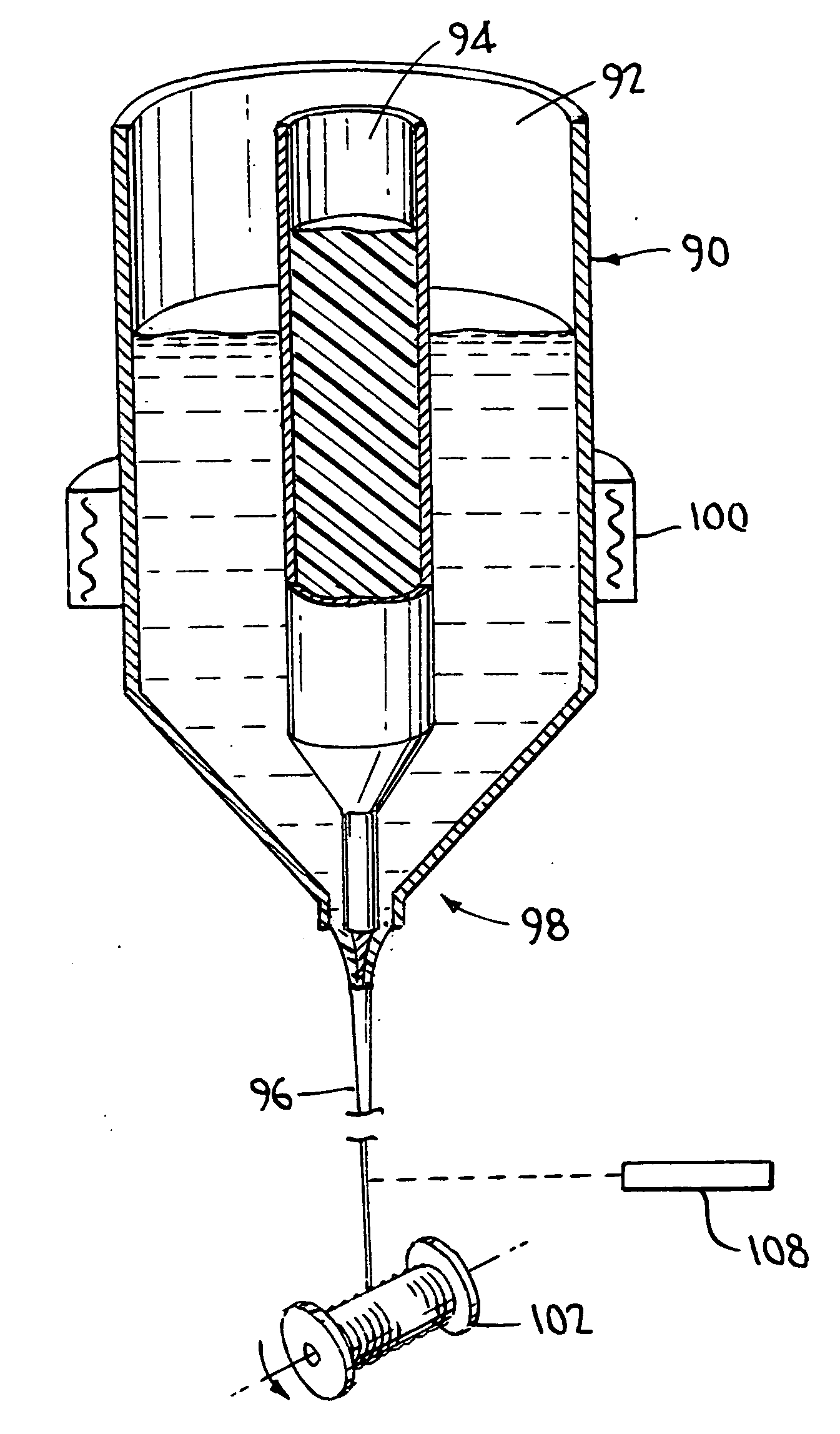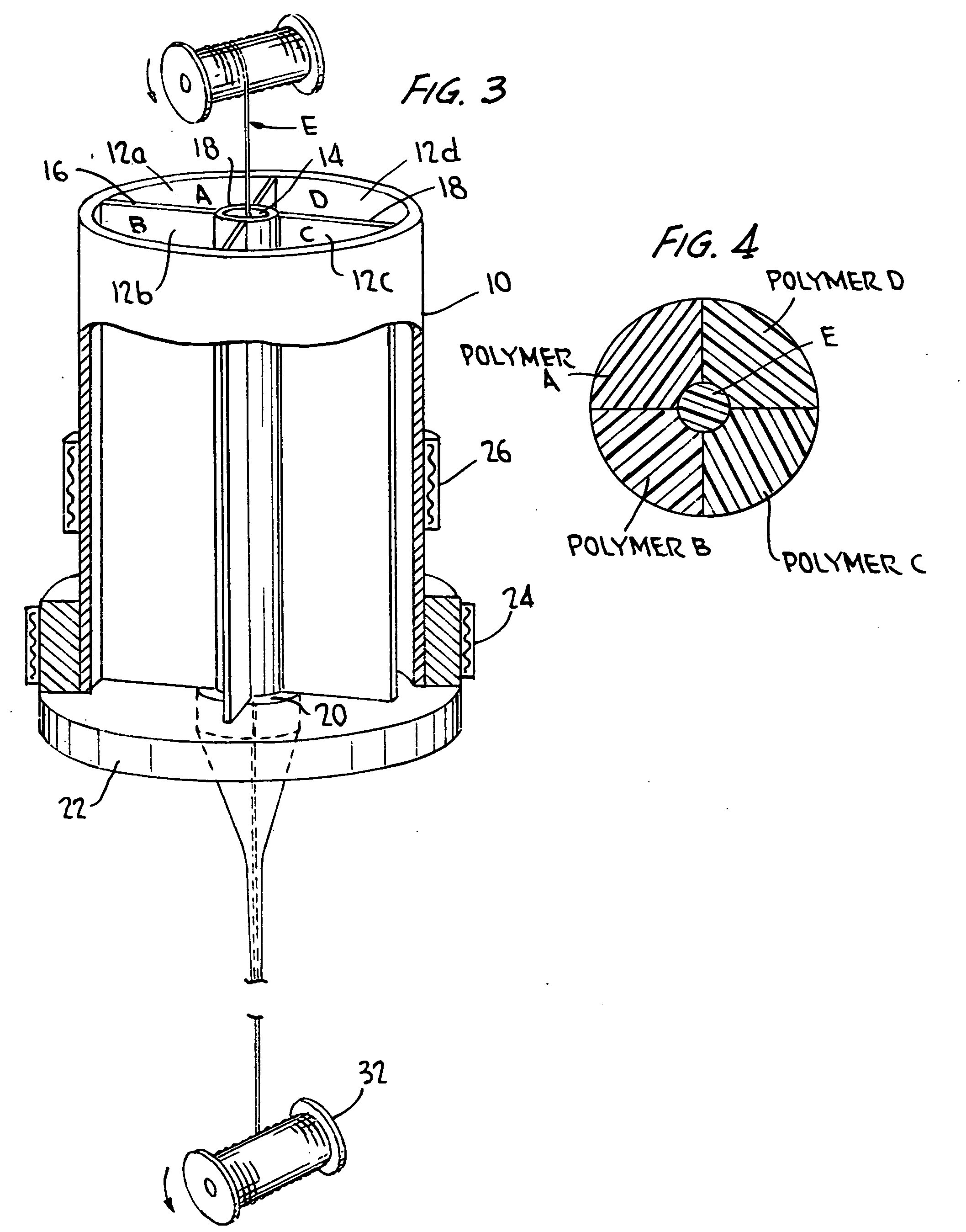Multicomponent textile fibers, methods for their production, and products made using them
a multi-component, textile fiber technology, applied in the field of fibers, can solve the problem of limited pressure applied to the supply line, and achieve the effect of different engineering properties
- Summary
- Abstract
- Description
- Claims
- Application Information
AI Technical Summary
Benefits of technology
Problems solved by technology
Method used
Image
Examples
Embodiment Construction
[0023]As described above, an objective of the invention is to manufacture a fiber or filament made up of plural types of polymeric material that do not intermix with one another during processing, such that their individual engineering and cosmetic properties are retained in the final product. FIG. 1 shows schematically a method and apparatus for doing so, and FIG. 2 shows the cross section of the product thus manufactured. Thus, in FIG. 1, there is provided a multicompartmented crucible 90. Crucible 90 is generally cylindrical overall, and is subdivided in this example into inner and and outer compartments 92 and 94 respectively. The compartments 92 and 94 are filled with the polymers desired to form the inner core and outer sheath of a simple two-compartment fiber, illustrated at 96. Typically the polymers are supplied in granular form, necessitating the compartmentalization of the crucible. The lower ends of the compartments terminate at an orifice 98 comprising concentric inner ...
PUM
| Property | Measurement | Unit |
|---|---|---|
| diameter | aaaaa | aaaaa |
| diameter | aaaaa | aaaaa |
| temperature | aaaaa | aaaaa |
Abstract
Description
Claims
Application Information
 Login to View More
Login to View More - R&D
- Intellectual Property
- Life Sciences
- Materials
- Tech Scout
- Unparalleled Data Quality
- Higher Quality Content
- 60% Fewer Hallucinations
Browse by: Latest US Patents, China's latest patents, Technical Efficacy Thesaurus, Application Domain, Technology Topic, Popular Technical Reports.
© 2025 PatSnap. All rights reserved.Legal|Privacy policy|Modern Slavery Act Transparency Statement|Sitemap|About US| Contact US: help@patsnap.com



